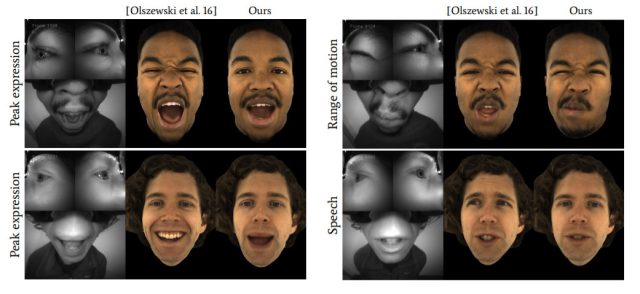SLOW YOUR META-ROLL —
John Carmack issues some words of warning for Meta and its metaverse plans
"But here we are, Mark Zuckerberg has decided that now is the time..."

Oculus consulting CTO John Carmack has been bullish on the idea of "the metaverse" for a long time, as he'll be among the first to point out. But the id Software co-founder spent a good chunk of his wide-ranging Connect keynote Thursday sounding pretty skeptical of plans by the newly rebranded Meta (formerly Facebook) to actually build that metaverse.
"I really do care about [the metaverse], and I buy into the vision," Carmack said, before quickly adding, "I have been pretty actively arguing against every single metaverse effort that we have tried to spin up internally in the company from even pre-acquisition times." The reason for that seeming contradiction is a somewhat ironic one, as Carmack puts it: "I have pretty good reasons to believe that setting out to build the metaverse is not actually the best way to wind up with the metaverse."
Today, Carmack said, "The most obvious path to the metaverse is that you have one single universal app, something like Roblox." That said, Carmack added, "I doubt a single application will get to that level of taking over everything." That's because a single bad decision by the creators of that walled-garden metaverse can cut off too many possibilities for users and makers. "I just don't believe that one player—one company—winds up making all the right decisions for this," he said.

The idea of the metaverse, Carmack says, can be "a honeypot trap for 'architecture astronauts.'" Those are the programmers and designers who "want to only look at things from the very highest levels," he said, while skipping the "nuts and bolts details" of how these things actually work.
These so-called architecture astronauts, Carmack said, "want to talk in high abstract terms about how we'll have generic objects that can contain other objects that can have references to these and entitlements to that, and we can pass control from one to the other." That kind of high-level hand-waving makes Carmack "just want to tear [his] hair out... because that's just so not the things that are actually important when you're building something."
"But here we are," Carmack continued. "Mark Zuckerberg has decided that now is the time to build the metaverse, so enormous wheels are turning and resources are flowing and the effort is definitely going to be made."
Build products, not architecture
Carmack used his own experience creating Doom as an example of the value of concrete, product-based thinking. Rather than simply writing abstract game engines, he wrote games where "some of the technology... turned out to be reusable enough to be applied to other things," he said. "But it was always driven by the technology itself, and the technology was what enabled the product and then almost accidentally enabled some other things after it."
Building pure infrastructure and focusing on the "future-proofing and planning for broad generalizations of things," on the other hand, risks "making it harder to do the things that you're trying to do today in the name of things you hope to do tomorrow, and [then] it's not actually there or doesn't actually work right when you get around to wanting to do that," he said.
To that end, Carmack spoke somewhat approvingly of concrete Meta products like Horizon Worlds and Horizon Workrooms, which can be clearly judged on how much value they're bringing to users. Interacting with other avatars in Workrooms, in particular, can be much more enjoyable than staring at a wall of Zoom faces, Carmack said. "You've got to actually be using the things to make value from it," he said. Getting Workrooms to actually work also required some detailed technical problem solving to help with unexpected audio processing and latency issues, solutions that can now be applied to many other metaverse products, he added.

But while Carmack identified some "good things" about the virtual reality co-presence possible in Horizon Worlds, he noted that it's "a far cry from the metaverse of our visions." While chatting with 16 people in a Worlds room is nice, he said, it's a far cry from something like a real-world conference that could have "thousands of people milling about" and wandering into sessions and conversations at a whim. Fully creating that kind of in-person conference experience, without the need to travel long distances, is "what we've always been pitching is the value of VR," he said.
With that vision in mind, Carmack said he is "laying down a gauntlet" that "we should be doing [Facebook Connect] in the metaverse" by next year's show. "I'll be really disappointed if I'm sitting here next year in front of a video crew and a camera in physical reality doing this talk," he said. "I want to be walking around the halls or walking around the stage as my avatar in front of thousands of people, getting the feed across multiple platforms."
Focusing on a mission of moving Connect into the metaverse, Carmack said, is a concrete goal that will "make sure that we're doing something that's valuable to at least us, and then it will very likely be valuable to a lot of other places."
ARS VIDEO
Sitrep: Azerbaijan's TB2 Drone
Technical problems
Getting VR gatherings to that massive scale is going to be difficult with today's VR hardware, Carmack said, especially if you also want to scale up the fidelity and quality of the avatars involved at the same time. Outsourcing some of the avatar processing to cloud computer clusters could help, he said, but that comes with its own problems of latency, fragmentation, and coordination with local devices.
Crafting a metaverse that actually works, Carmack said, is more of an optimization problem than a pie-in-the-sky space for unrestricted design. "Everybody that wants to work on the metaverse talks about the limitless possibilities of it," Carmack said. "But it's not limitless. It is a challenge to fit things in, but you can make smarter decisions about exactly what is important and then really optimize the heck out of things."

"Are we necessarily even aiming for all the right targets with the social metaverse?" Carmack asked rhetorically. While Meta is understandably focused on the idea of virtual co-presence, a lot of real-world "luxury" is predicated on the ability to provide isolation, like a private beach or private plane, he said. "Sometimes these things that just add people are not always a positive, especially for people that are a little more on the introverted side of things."
Carmack also questioned the idea that everything in the metaverse should be built around 3D models and recreations of physical objects, since that risks throwing out the trillions of dollars of assets and software that have been designed for flat screens. "Maybe the metaverse is just lots of screens, and... maybe there is a screen-focused world where everything that people do with photography and videography just has this amazing place in a virtual world." he said. "Everybody can do magical things with video today, whereas not everybody can do that many magical things with 3D modeling and 3D art."
Carmack also took issue with the idea of specific hardware being specifically marketed as "metaverse oriented." Metaverse-style applications "will work just fine on Quest 2" Carmack said, adding that the facial tracking and other features of upcoming hardware like Project Cambria "are not central to the experience, and it is going to be significantly more expensive." Carmack said he hopes that VR hardware can eventually cover the same wide range of price and quality options that smartphones do, from $50 basic handsets to $2,000 top-of-the-line powerhouses.
Carmack's full, hour-long keynote is worth a watch for anyone who wants to get into the head of a person who has been immersed in the conceptual and practical worlds of VR and the metaverse for years now. You can also skim through a copy of Carmack's notes for the speech if you don't have the time to listen for an hour.
No comments:
Post a Comment